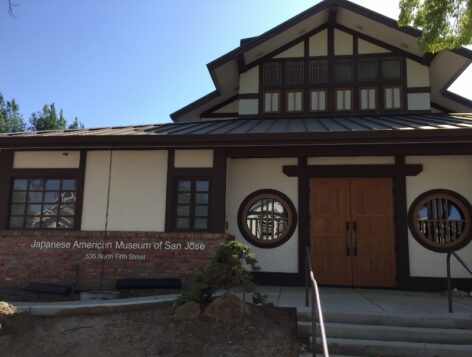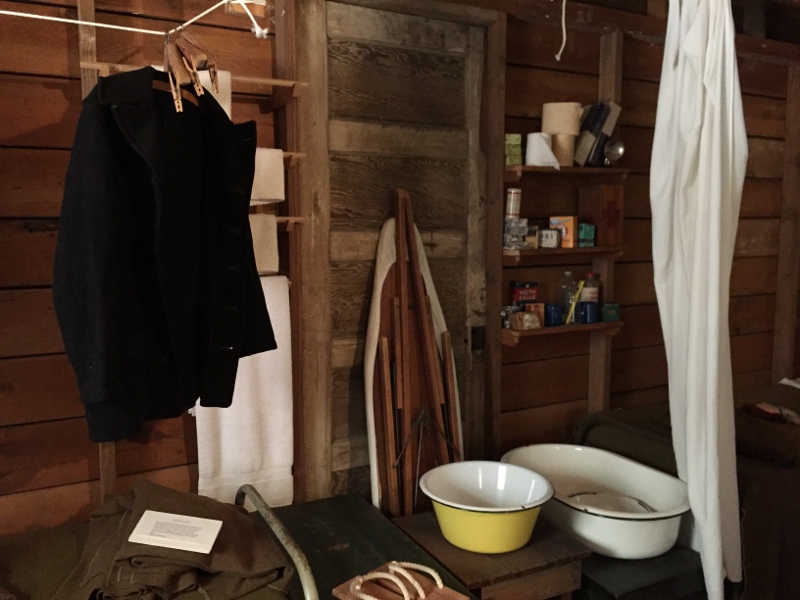The Japanese American Museum of San Jose
Visiting the Japanese American Museum of San Jose
 I visited the Japanese American Museum of San Jose (JAMsj) in May of this year with my wife and my wife’s aunt, who lives in San Jose and is a member of the museum. I am very glad that we went, because I humbly submit that the visit helped to increase my understanding of the world. I have not yet visited the Japanese American National Museum in Los Angeles or other Japanese American museums in San Francisco, Seattle and other cities. I have been to the Japanese Cultural Center of Hawaii (Honolulu) a number of times, thank you.
I visited the Japanese American Museum of San Jose (JAMsj) in May of this year with my wife and my wife’s aunt, who lives in San Jose and is a member of the museum. I am very glad that we went, because I humbly submit that the visit helped to increase my understanding of the world. I have not yet visited the Japanese American National Museum in Los Angeles or other Japanese American museums in San Francisco, Seattle and other cities. I have been to the Japanese Cultural Center of Hawaii (Honolulu) a number of times, thank you.
There is a portion of the JAMsj that features the 100th Infantry Battalion and the 442nd Regimental Combat Team. There is also material on the Military Intelligence Service. What made the biggest impact on me, however, were the stories and artwork related to the forced incarceration of Japanese Americans who were living on the West Coast, including Japanese Americans who lived in and around San Jose.
Reading the material and viewing the artwork impressed on me a bit of the experiences of the 120,000 Japanese Americans who were forced from their homes after December 7, 1941 – impressions that I had not gained from books and articles I had read before my visit. There is also a re-creation of a barracks from the Tule Lake incarceration camp that we walked through that held my attention in a way that a written description would not. My mother-in-law was sent to an incarceration camp with her family, but she does not remember much since she was 2 years old when they entered the camp. My wife’s aunty was also incarcerated with her family in a different camp and she shared some stories with us and with the docent who took us through the JAMsj. These are stories that must not be forgotten and the JAMsj is helping to tell these stories to visitors to the Museum and their website.
The JAMsj also has other exhibit material such as old farming equipment used by San Jose and Santa Clara Valley Japanese Americans farmers (including a tractor from about 1915!), baseball and sumo related information from around San Jose and information on the pioneers who established the San Jose Japantown area. To folks like me, born and raised in Hawaii, I highly recommend visiting the JAMsj and other Japanese American museums on the mainland. The hope is that you come away with a greater understanding of the fuller Japanese American experience, which includes the experiences of our 442nd veterans and also the experiences of the Japanese Americans incarcerated during WWII.
 Located in the San Jose Japantown area, the JAMsj is located about half a block off Jackson Street (which has a number of Japanese restaurants for your dining adventure). The Museum is in the former residence of Tokio Ishikawa, M.D., who was born and raised in San Jose, practiced medicine and also led tours of Japantown so that he became known as the Historian of San Jose Japantown.
Located in the San Jose Japantown area, the JAMsj is located about half a block off Jackson Street (which has a number of Japanese restaurants for your dining adventure). The Museum is in the former residence of Tokio Ishikawa, M.D., who was born and raised in San Jose, practiced medicine and also led tours of Japantown so that he became known as the Historian of San Jose Japantown.
www.jamsj.org
by S&D member Jon Ishihara
